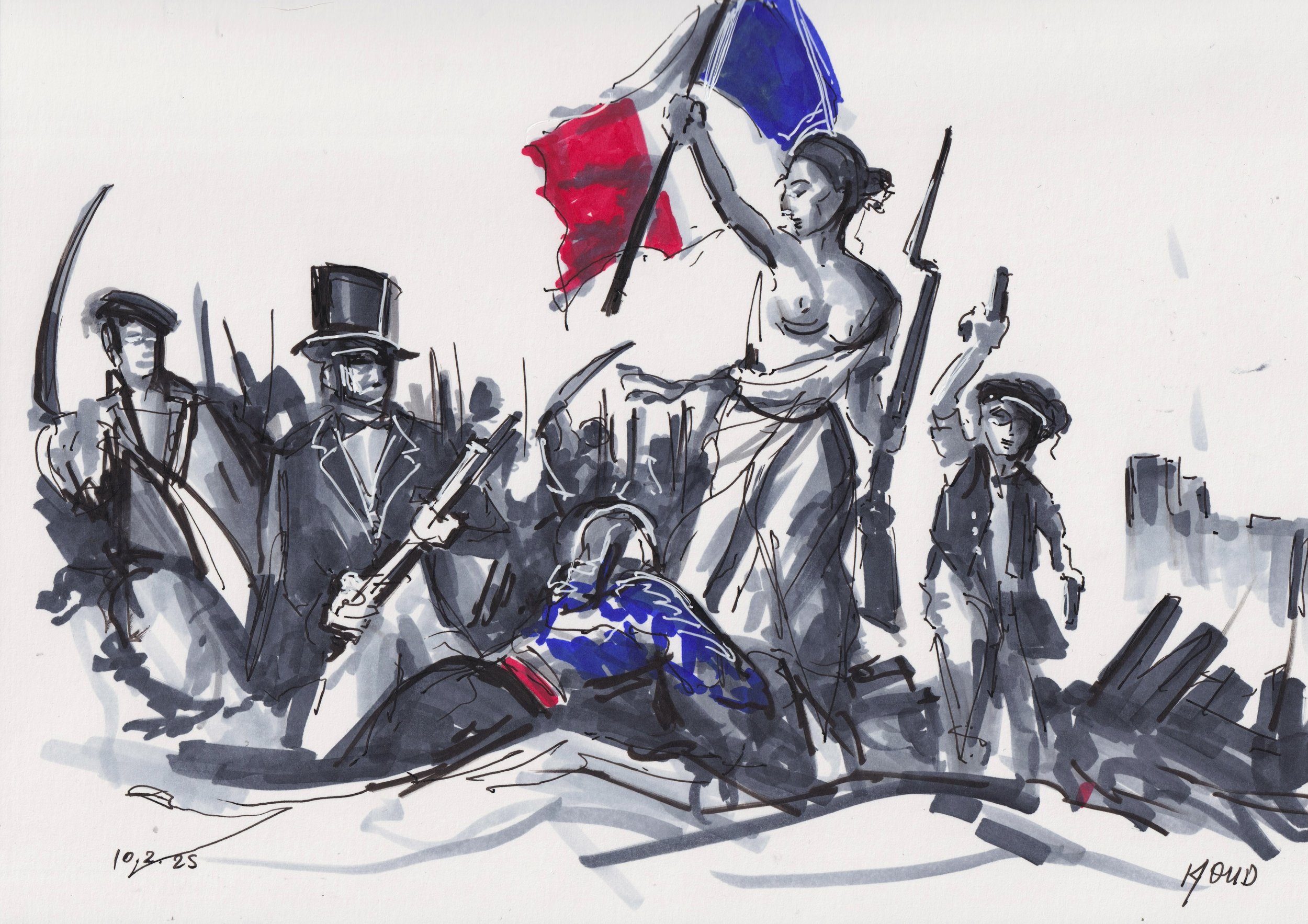 Image 1 of 2
Image 1 of 2

 Image 2 of 2
Image 2 of 2



Liberty Leading the People
“Liberty Leading the People” is one of the most powerful visual symbols of revolution and national identity in Western art. Painted by Eugène Delacroix in response to the July Revolution of 1830 in France, the artwork commemorates the overthrow of King Charles X and the rise of a more democratic government. At its center is the allegorical figure of Liberty—a bare-breasted woman wearing a Phrygian cap—charging forward with the French tricolor flag in one hand and a musket in the other. She leads a diverse group of revolutionaries, symbolizing unity across class and age in the fight for freedom.
The painting blends Romanticism’s dramatic emotion with political symbolism, and it served as a visual rallying cry for the values of liberty, fraternity, and equality. Over time, Liberty has become an enduring personification of the French Republic, and the painting itself a universal emblem of resistance, revolution, and the human struggle for justice.
I was so inspired by this work on my visit to the Louvre that I wanted to capture the work on location. I had just finished watching Les Miserables on London Broadway that depicts the events leading up to this classic piece.
“Liberty Leading the People” is one of the most powerful visual symbols of revolution and national identity in Western art. Painted by Eugène Delacroix in response to the July Revolution of 1830 in France, the artwork commemorates the overthrow of King Charles X and the rise of a more democratic government. At its center is the allegorical figure of Liberty—a bare-breasted woman wearing a Phrygian cap—charging forward with the French tricolor flag in one hand and a musket in the other. She leads a diverse group of revolutionaries, symbolizing unity across class and age in the fight for freedom.
The painting blends Romanticism’s dramatic emotion with political symbolism, and it served as a visual rallying cry for the values of liberty, fraternity, and equality. Over time, Liberty has become an enduring personification of the French Republic, and the painting itself a universal emblem of resistance, revolution, and the human struggle for justice.
I was so inspired by this work on my visit to the Louvre that I wanted to capture the work on location. I had just finished watching Les Miserables on London Broadway that depicts the events leading up to this classic piece.
“Liberty Leading the People” is one of the most powerful visual symbols of revolution and national identity in Western art. Painted by Eugène Delacroix in response to the July Revolution of 1830 in France, the artwork commemorates the overthrow of King Charles X and the rise of a more democratic government. At its center is the allegorical figure of Liberty—a bare-breasted woman wearing a Phrygian cap—charging forward with the French tricolor flag in one hand and a musket in the other. She leads a diverse group of revolutionaries, symbolizing unity across class and age in the fight for freedom.
The painting blends Romanticism’s dramatic emotion with political symbolism, and it served as a visual rallying cry for the values of liberty, fraternity, and equality. Over time, Liberty has become an enduring personification of the French Republic, and the painting itself a universal emblem of resistance, revolution, and the human struggle for justice.
I was so inspired by this work on my visit to the Louvre that I wanted to capture the work on location. I had just finished watching Les Miserables on London Broadway that depicts the events leading up to this classic piece.
